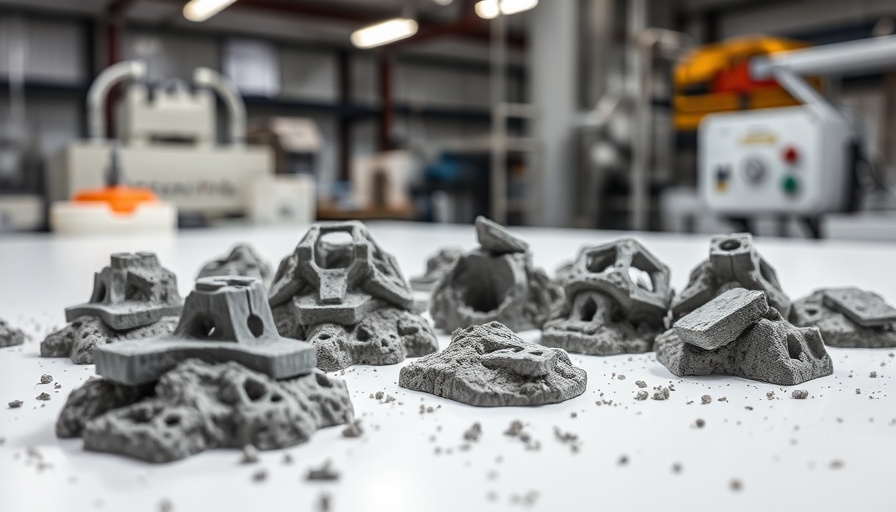
The Evolving Landscape of 3D Printing in Space
The interest in space exploration has skyrocketed in recent years, and with that comes the pressing need for advanced technologies that can adapt to the unique challenges posed by off-world environments. One of the most intriguing developments in this area is the application of 3D printing using lunar regolith. Recent research conducted by Julien Garnier and colleagues at the University of Toulouse has unveiled significant insights into the quality of 3D printed objects made solely from lunar regolith, highlighting the varied results based on different feedstocks.
Lunar Regolith: A New Building Material
Lunar regolith, the loose material covering the Moon’s surface, has long been considered a potential resource for constructing habitats and tools on the lunar surface. The challenge lies in utilizing this material effectively, without needing to transport additional binding agents from Earth. The recent study focused on the Basalt of Pic d'Ysson (BPY), a popular analog for lunar regolith due to its similar composition to lunar basalt. Researchers aimed to determine the compressive strength of 3D printed BPY structures, using techniques such as selective laser melting.
Understanding Compressive Strength and Its Importance
Compressive strength is crucial when it comes to building materials, especially in environments with different gravitational forces, such as the Moon. Despite its lower gravity, structures on the Moon need to endure stresses that could compromise structural integrity. The data from the recent studies indicates that compressive strength varies widely depending on the printing technique used. For instance, Powder Bed Fusion methods produced 3D printed materials with a compressive strength of only 4.2 MPa, which is barely above that of a standard masonry brick—an alarming detail for future construction projects.
Comparative Insights: Keeping Space Costs Down
Considering the high costs associated with transporting materials to space, alternatives to imported binding agents are crucial. Various projects are already experimenting with different approaches for integrating lunar regolith with minimal Earth-sourced materials. For example, other studies have explored solar sintering techniques that utilize the sun’s energy to fuse regolith particles, which not only saves on transport costs but also harnesses the Moon's abundant energy resources.
Challenges and Future Directions in Space Manufacturing
While these breakthroughs are promising, there is still much work to be done to enhance the overall strength and reliability of 3D printed lunar materials. The variations in compressive strength highlight a fundamental need for further research to refine 3D printing techniques and better utilize lunar resources. Future missions may leverage this technology not only to build habitats but also to create tools and machinery essential for long-term lunar exploration.
Final Thoughts: The Path Ahead for Lunar Construction
The quest for effective construction techniques on the Moon is just beginning. As researchers continue to explore the potential of lunar regolith and refine 3D printing processes, the possibility of self-sustaining human activities on the Moon edges closer to reality. Understanding the quality of materials and the effectiveness of various feedstocks presents exciting avenues for research and development that could redefine our approach to space logistics.
 Add Row
Add Row  Add
Add 




Write A Comment